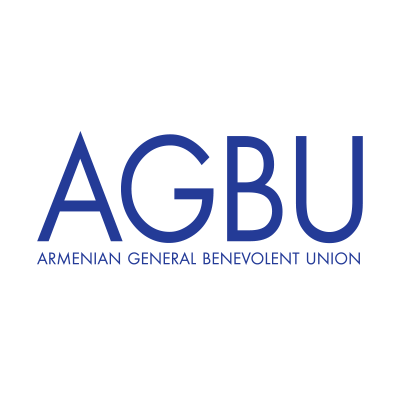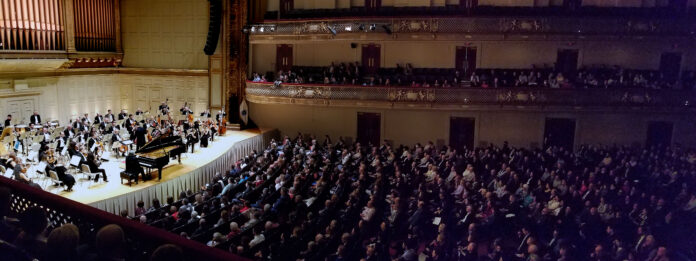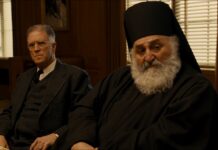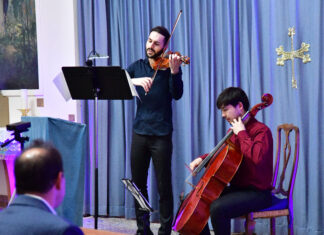BOSTON — The Armenian National Philharmonic Orchestra recently concluded its four-city tour of major halls in North America, with Boston’s Symphony Hall as its final stop on November 21, to great acclaim. The Boston concert was the only one sponsored by local Armenian American community organizations, with proceeds to aid the forcibly displaced people of Artsakh.
This was a rare appearance for this orchestra in Boston, as the last time it played here was in 1989. There was great excitement in the audience who packed the main floor and first balcony of the history Symphony Hall. As reviewer Susan Miron noted in the Boston Musical Intelligencer on November 25, “It was clear, even before the concert began, that the enthusiastic, nattily well-dressed, largely Armenian crowd that gathered Tuesday night at Symphony Hall anticipated an extraordinary evening of music and kinship. I almost felt like I was crashing a huge family reunion. It was the friendliest and most happily expectant crowd I’d seen at a concert in a long time.”
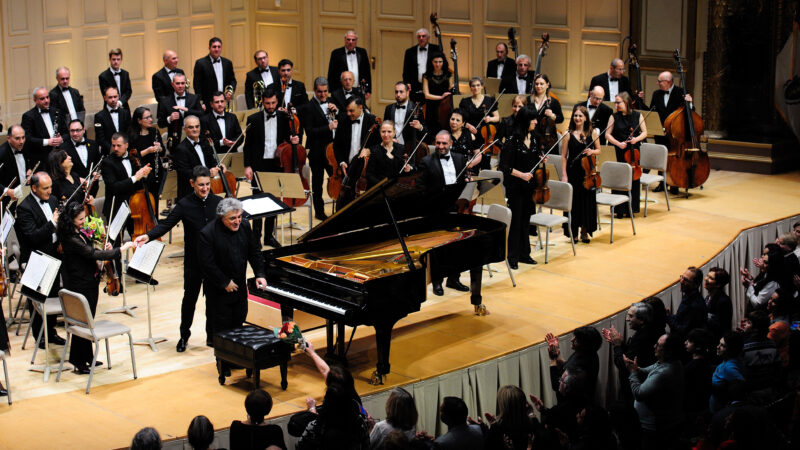
The orchestra, conducted by Eduard Topchjan, observed Aram Khachaturian’s 120th anniversary of birth by opening with three selections from the composer’s Spartacus Ballet Suites, Variation of Aegnia and Bacchanalia, Adagio of Spartacus and Phrygia, and Dance of Gaditanae – Victory of Spartacus. Sergei Rachmaninoff’s 150th anniversary was also commemorated through the performance of two works. First, as Miron observed, “The phenomenal Sergei Babayan delivered a sensitive, utterly thrilling performance of Rachmaninoff’s 3rd Piano Concerto (Opus 30), making short work of the sprawling concerto’s technical difficulties.” This was the New York-based pianist’s Boston debut as soloist with an orchestra, and he justified prior accolades bestowed upon him, including an “unstoppably volcanic force” (International Piano Magazine) or a “magician of the piano sound.” (Die Rheinpfalz).
As Miron gushed, “he came in and played magnificently, with perfectly executed dynamics and lyricism, his magisterial technique almost was thrilling as his tender musicality…”
In response to a thunderous ovation, Babayan returned to play as an encore a very different piece composed in a minimalist style by Estonian composer Arvo Pärt. Elegant and terse, “Für Alina,” (a dedication to a friend’s daughter) is rooted in Gregorian chant and uses simple overtone series of the “bell” sound as its basis. Mr. Babayan’s delivery of this hauntingly beautiful work added an almost spiritual dimension to the performance, evoking a sense of reflection and contemplation.
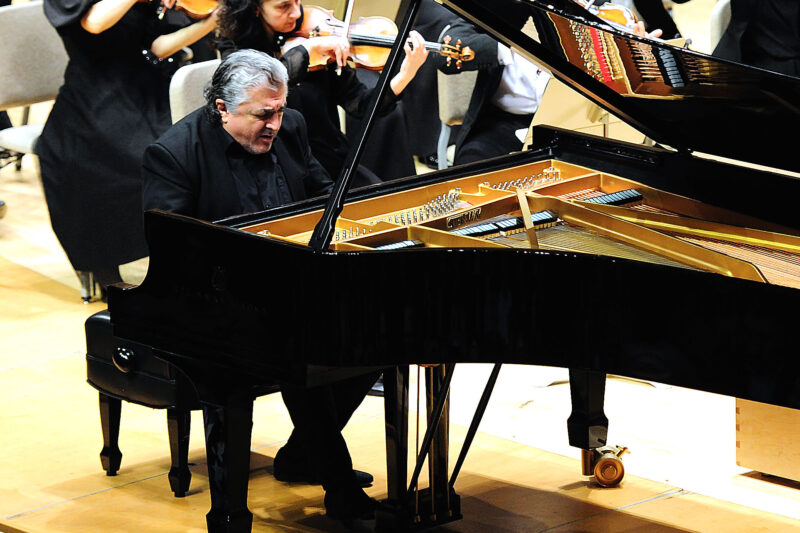
After the intermission, the orchestra performed Rachmaninoff’s popular Symphony No. 2 in E minor, Opus 27, and, due to the lengthy applause, despite the late hour, concluded with an encore performance of the boisterous Khachaturian’s Waltz from the Masquerade Suite.
